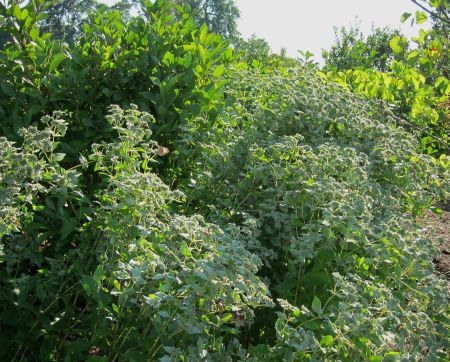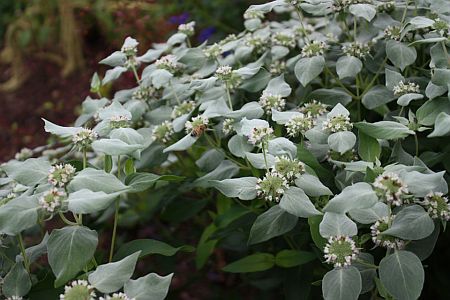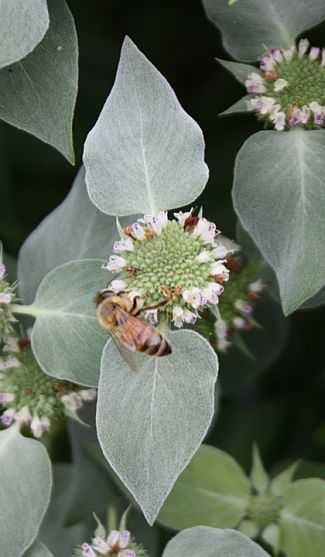[So I’ve veered off the “weird” track into “wonderful” already.
Whoops.]
“Mint!” is tantamount to the cry of “Bear!” to many gardeners. Mints tend to run amok, in just about any environment, and are difficult to remove once established. A pot or hanging basket is useful for containment, but not always successful. It wants out. The upside to mint in your garden is, of course, cocktails. Essential for the mint julep and the mojito. Also useful in lots of dishes – I prefer my tzatziki with mint, thank you.
Culinary mint is Mentha, but the subject of this post is mountain mint: Pycnanthemum. Same family (Lamiaceae), different genus. It’s a fabulous garden plant that I’ve been blathering about in various talks for a few years, yet the mention of “mint” seems to cause audience members to cringe, glare, or worse. This is yet another example of a common name with negative associations scaring people off (like “Stinking Hellebore” – that’ll sell some plants).
There are 19 North American perennial species in the genus, with lots of naturally-occurring varieties within many of the species. Many look A LOT alike, complicating i.d. Most mountain mints are found from Quebec and Ontario down to Florida and west to the Mississippi; a few species make their way to the Great Plains, with one species in California.

Pycnanthemum muticum (short-toothed mountain mint) is probably the most widely available; usually propagated and grown by nurseries with a native plant emphasis such as North Creek Nurseries (Landenberg, PA) (wholesale propagator). Hardy from USDA Zone 4 all the way down to 8, it does best in warmer climates in part shade, similar to the edge of meadows where it’s usually found. In both our campus garden and our home garden (z 6a), it’s in full sun. It doesn’t need tons of water – the one at home hasn’t seen rain nor sprinkler in 4 weeks and looks just fine.

Factoids out of the way, here’s why it’s wonderful: the upper bracts are silvery, topping the bright green clump like frosting on a cupcake. It’s not small – 3’ tall where happy. The foliage is plenty “minty” – it would actually work in a mojito emergency. The clump gets bigger over time; great for digging up chunks for your friends. In the center of the bracts, the flowering stem is compressed into this little disc, with a teeny flower arising at the perimeter (hard to describe, the photo does it better). But packed within the miniscule pinkish-white flower is a ton of nectar. Especially attractive to bees, wasps, and some Lepidops, the entire top of the plant is buzzing with action on a warm sunny day. Nectar flow (essential for honey) is very limited this time of year, especially during drought.

Residents of our home hives are going for it in a big way – will be interested to see if there are any minty notes to the next batch of honey extracted. So there you have it – a truly wonderful plant…beautiful, tough, native, pollinator attractor, and minty fresh!
</d
Amen! I adore pycnanthemum and am so glad to see another gardener champion this beautiful, aromatic bee-magnet. Thanks!
Oh thanks Holly for that blog! This really was a wonderful plant Wednesday. I loved learning about this plant and the pics you posted were great!
Thanks, Glorypea and Julie!